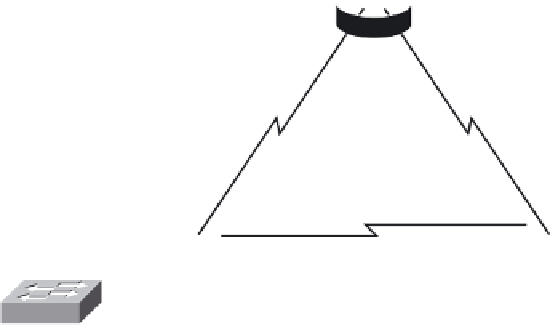Information Technology Reference
In-Depth Information
Figure 6-16
Topology Diagram for Activity 6-1 (Answer)
50 Hosts
50 Hosts
192.168.1.0/26
192.168.1.64/26
Fa0/0
Fa0/1
HQ
S0/0/1
DCE
S0/0/0
192.168.1.224/30
192.168.1.228/30
20 Hosts
12 Hosts
192.168.1.160/27
192.168.1.208/28
Fa0/1
Fa0/1
192.168.1.232/30
S0/0/0
DCE
S0/0/1
S0/0/0
DCE
B1
B2
S0/0/1
20 Hosts
Fa0/0
12 Hosts
Fa0/0
192.168.1.128/27
192.168.1.192/28
Task 1: Examine the Network Requirements
Examine the network requirements and answer the questions that follow. Keep in mind that IP
addresses will be needed for each of the LAN interfaces.
How many subnets are needed?
9
1.
What is the maximum number of IP addresses that are needed for a single subnet?
51
2.
How many IP addresses are needed for each of the Branch1 LANs?
21
3.
How many IP addresses are needed for each of the Branch2 LANs?
13
4.
How many IP addresses are needed for each of the WAN links between routers?
2
5.
What is the total number of IP addresses that are needed?
176
6.
What is the total number of IP addresses that are available in the 192.168.1.0/24 network?
254
7.
Can the network addressing requirements be met using the 192.168.1.0/24 network?
yes
8.
Task 2: Design an IP Addressing Scheme
Determine the subnet information for the largest network segment or segments.
Step 1.
In this case, the two HQ LANs are the largest subnets.
How many IP addresses are needed for each LAN?
51
1.
What is the smallest-size subnet that can be used to meet this requirement?
/26
2.
What is the maximum number of IP addresses that can be assigned in this size
subnet?
62
3.



























































































































































































































































































































































































































































































































































































































































































































































































































































































































































































































































































































































































































































































































































































































































































































































































































